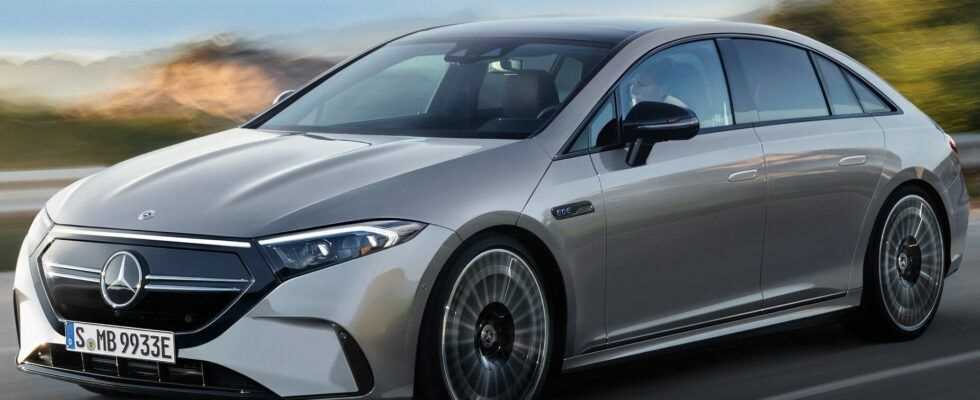Even if Daimler is keeping all options open when it comes to the drive system of the future: Now things are happening in quick succession with the new electric vehicles. While the EQS as the electric counterpart to the S-Class is being driven by the press these days, the Swabians are preparing for the world premiere of the EQE, which, like the E-Class, should appeal to a much wider audience.
The platform has short overhangs and a large passenger cell that blows up the space of an E-Class. At the front, the EQE wears the typical EQ front mask, the flanks are muscular, and the front and rear have horizontal light strips. The batteries arranged between the axles allow a particularly flat vehicle floor. Our illustration shows: Overall, the EQE looks significantly sportier than the large EQS, which does not find it easy to conceal its considerable height, especially at the rear.
Initially, the EQE is powered by front and rear-mounted electric motors with a total of around 400 hp that drive both axles. According to the WLTP cycle, the range should be more than 500 to 700 kilometers, depending on the model. A purely rear-wheel drive entry-level version could be submitted later. And there should also be an AMG variant, with a significant increase in performance, rear-biased torque distribution and increased top speed.
Depending on the market, there are door handles that can be lowered as standard for an additional charge. The portals give access to an interior that is as spacious as it is futuristic and designed for future visions of autonomous driving. The optional “hyperscreen” cockpit in the EQS, which optically combines three screens under a curved glass surface to form a closed display panel, should also be offered in the EQE. All-wheel steering is also announced.
The EQE is to be built in Sindelfingen. The German economy enjoys the privilege of enjoying the long-awaited success of electromobility with a lot of money and good words – and thus compensating for the loss of the internal combustion engine, which Daimler only wants to further develop in China in the future.
Jens Meiners / ampnet
